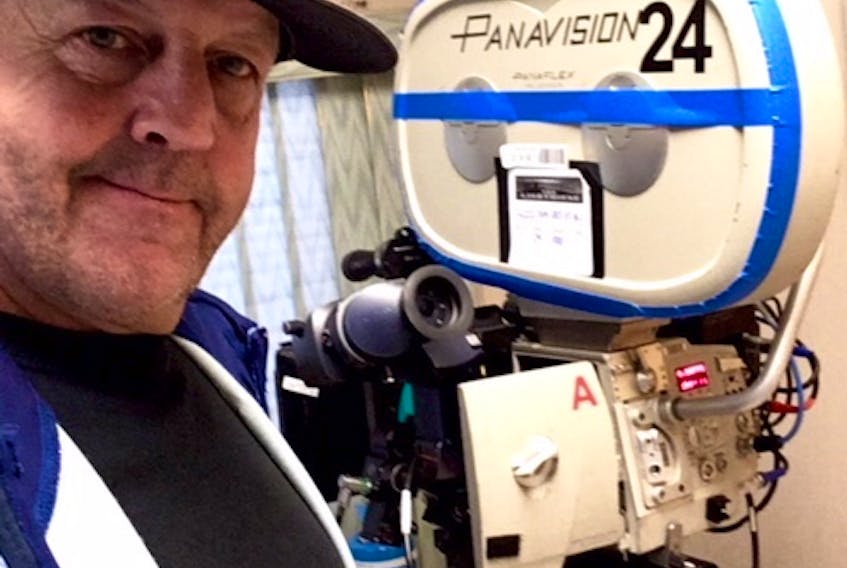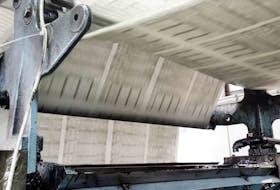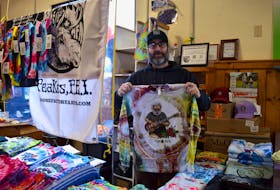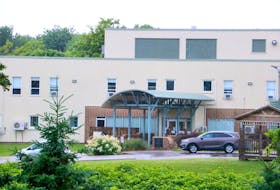Eddy McInnis didn’t expect to be on an Oscar-nominated team back in 1996, when he was offered a spot on the crew of television series Emily of New Moon.
Today, with 24 years of film experience now behind him, the Kensington native’s latest project, The Lighthouse, is up for an academy award for cinematography.
“The director, Rob Eggers, and Jarin (Blaschke) had an absolute vision, and they didn’t waver,” said McInnis.
“He wanted 35 millimetre black and white film. There was no bending on that."
While Blaschke, as director of photography, has his name on the nomination, McInnis is pretty proud of his team’s part in the production.
“We actually executed his vision, so yeah, we were a major part of it, for sure,” said McInnis, going on to name several other departments that he felt could have been nominated for awards.
“There was, like, 200 of us on that film.”
The Lighthouse follows two lighthouse keepers as they struggle to stay sane on a remote New England island.
Filmed outside Yarmouth, N.S., the vibe is claustrophobic and intense, and the action takes place during “the storm of a century”, said McInnis.
Setting was important to Eggers.
“Cape Forchu,” he told Chronicle Herald reporter John DeMont, “is the third most formative character in the film.”
And the cinematography nominees are:
- The Irishman
- Joker
- The Lighthouse
- 1917
- Once Upon a Time in Hollywood
Early days
But back on the set of Emily of New Moon that first summer, McInnis wasn’t looking for a career in film.
“I didn’t love it. I didn’t get it.”
But they asked him back again and he earned the attention of the first assistant cameraman - the job McInnis held on The Lighthouse - who began to coach him through tasks, like changing the roll of film or swapping a filter.
“He totally changed it for me because he started teaching me stuff,” McInnis said.
“I caught the bug.”
McInnis became part of the union and continued to work, eventually taking the leap and moving to Halifax in 2000.
“My film school has been the set. Most people seek out filmmaking and go to school. Filmmaking found me, I didn’t think of it as a career, I just went with it and worked hard,” he said.
“Because hard work, everybody sees - producers, everyone. So, until I learned stuff, I thought the best idea was just to work as hard as I could.”
McInnis certainly did learn stuff. Enough to make him a natural fit for The Lighthouse.
The vision
Blaschke contacted McInnis while he was working on “Frontier”, a television series starring Jason Momoa (best known for Game of Thrones), in Scotland.
“It’s going to be 35mm film,” said Blaschke.
“Okay, cool,” replied McInnis.
He was in. He had started out working with film in 1996, so he knew he was up to the job.
“I was very excited,” said McInnis.
“The Lighthouse” stands out with its square picture - a 1.20 aspect ratio to those in the industry - created by the now-vintage technology.
Working with film brought back the old ways of filmmaking, said McInnis.
“We had to be diligent and disciplined.”
It meant rehearsing the scenes to near-perfection and conserving film, calling “cut”, if things weren't going well.
“It was refreshing.”
Kensington, P.E.I. native Eddie McInnis has worked on over 100 projects, here’s a list of the ones he mentioned in his interview with the Journal Pioneer:
- Emily of New Moon
- Pit Pony
- Wind at my Back
- The Shipping News
- Ballad of Jack and Rose
- Aquaman
- Frontier
- Jesse Stone
- Mr. D
- The Righteous
- The Republic of Doyle
- Newfoundland at Armageddon
- Christmas Fury
On set
The cast of two, Willem Dafoe and Robert Pattinson, like the camera equipment, was a combination of old and new.
“Willem Dafoe, there’s nothing we could tell him about film making that he didn’t already know,” said McInnis.
The experienced Dafoe was used to the cadence of film versus digital camera work, and McInnis saw the veteran’s love of the process.
Pattinson, no slouch himself, worked to match Dafoe’s work ethic.
“I think what happened, I think they fed off each other and upped each other’s games,” he said.
“I think it rose both of their performances … I wouldn’t be able to tell you who was the lead and who was the supporting actor, because they were both leads by the end of it.”
McInnis has filmed a lot of actors over the years, yet the performances he captured in The Lighthouse stand out.
“It’s unbelievable what the good ones will put into it, and therefore what we, the crew, will put into it when we see that.”
The crew’s contributions didn’t go unnoticed.
Dafoe told the Chronicle Herald in a previous interview he took heart in the locals’ attitude to the elements.
“They weren’t complaining and they knew how to dress for it and they were philosophical about the hardships,” he said.
“When they are soldiering on, of course you are going to soldier on.”
That, in fact, is one of the things Dafoe loves about movies. He stayed in a cabin close to the film’s location and immersed himself in the setting.
“You go someplace you create a dynamic, you have a leader, you have an experience, you try the best you can, you record it and then something is made out of that.”
Hard work
The cameras were from the 90s, said McInnis, but most of the lenses - the “glass” - used in the film were from the 1930s to 1950s. One was from 1914.
“(Blaschke) scoured Los Angeles, Panavision, Hollywood to find this glass. The oldest glass,” said McInnis.
The lenses were very worn, so Blaschke took them to a lens technician at Panavision where they were re-mounted in new housing and mounts.
McInnis is used to having a matched set of lenses to work with, so the salvaged collection was something he had to get used to.
“Each of them had different characteristics,” he said.
“I actually loved it by the time we started filming.”
Great outdoors
While working with film was a challenge McInnis was happy to return to, the weather was another matter.
“The weather was its own character,” he said.
“It was absolutely … the toughest film I’ve ever done in that regard.”
It could take up to 10 minutes to change a filter as the crew worked to keep raindrops off the lens, he said.
When it wasn’t cold, wet and rainy, the crew made a storm themselves with “the magic of filmmaking”, which included a rain tower and fans.
The discomfort was worth it to make a film like The Lighthouse, said McInnis.
“To endure that kind of project and come through on the other end and be successful - that’s what it’s about really.”
A recent text from Blaschke praised McInnis’ team’s hard work creating the feature using film in tough conditions.
“So that definitely makes me feel part of it.”
Up next
Nova Scotia’s film industry has endured some lean years after the government cut the film tax credits. McInnis stayed in Halifax, but many friends left for work elsewhere.
Despite the lack of financial incentive, The Lighthouse came to Nova Scotia to film.
McInnis hopes it puts the province back on the map.
“I think it can do nothing but help the whole province - and accolades for the technicians and crew here.”
Though, he was never a fan of the phrase “it’s just nice to be nominated", McInnis finds himself saying it a lot lately.
“Now that we are, I can say: It’s just nice to be nominated,” he said.
“That we’re recognized amongst all them, that’s a win on its own, really.”
He’s never watched the Oscars, but while Blaschke is down in Hollywood wearing a tuxedo, McInnis and the rest of his crew will likely gather in Halifax to see what happens on Feb. 9.
RELATED: The Lighthouse, shot in Yarmouth, nominated for Oscar in cinematography









